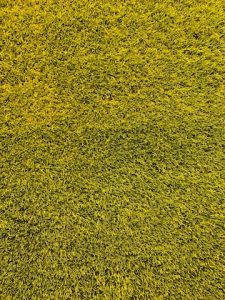
Artificial grass covers about 50 million acres in the US, placing it third in total acreage in all of the United States, according to Forest Grass. This type of turf is seen all across the country in stadiums, playing fields, schools, and even homes. While the benefits of using this type of artificial grass include an improved overall look and much less maintenance than a traditional garden, you’ll want to keep a few things in mind before or after installing artificial grass in your garden.
The Lowdown on Recycling Artificial Grass
Unfortunately, even the highest quality, most durable artificial grass doesn’t last forever. So, when it’s time to replace it, you’ll want to ensure you’re smart about how you do it in order to reduce the impact you’ll be having on the environment as well as your lawn in general. In order to environmentally responsible, it’s best to recycle your artificial grass. The best route to take when replacing the artificial grass in your garden is to contact a company dedicated to recycling artificial materials so that they can make use of the material in the best way, as most of these types of turfs contain some sort of filler that can’t be recycled with the rest of the material.
The Benefits of Going Back to Grass
Because grass is a living organism, it takes in carbon dioxide and releases oxygen into its immediate atmosphere. This process of photosynthesis is beneficial for your home, as studies show that an area of real grass measuring 2,500 square feet produces enough oxygen for a family of four to breathe. There’s no doubt that real grass is all around better for the environment and your family, and even more so if you live in a hotter climate. Lawns have been shown to offset 50% of solar heat through cooling evaporation, and these cooler air temperatures directly impact that cooling needs of your home.
How to Prep Your Lawn for the Change
Once you’ve made the decision to switch back to real grass, you’ll need to prepare your lawn for the growth. Kill weeds with a non-selective herbicide about two weeks before you want to seed your lawn. Then, you’ll begin aerating the area, which is especially important if your soil is really dense and compact. Once your lawn is ready and you’ve selected the type of grass seed you want to use, you can spread the seeds and feed the growth. To ensure proper growth, it’s recommended to water daily.
The Grass is Always Greener on the Other Side
When considering the change from artificial grass to real grass in your yard or garden, it’s important to consider, first, how you will dispose of and recycle your artificial turf. Try contacting a company that specializes in this type of recycling or consider repurposing it by donating it to an animal shelter or local playground. The effects of a well-mown lawn can help the overall look of your garden.
Having a real lawn surface will complement the plant and insect life, as well as helping the overall ecological makeup of your backyard.
Guest Post submitted by Jackie Edwards.
